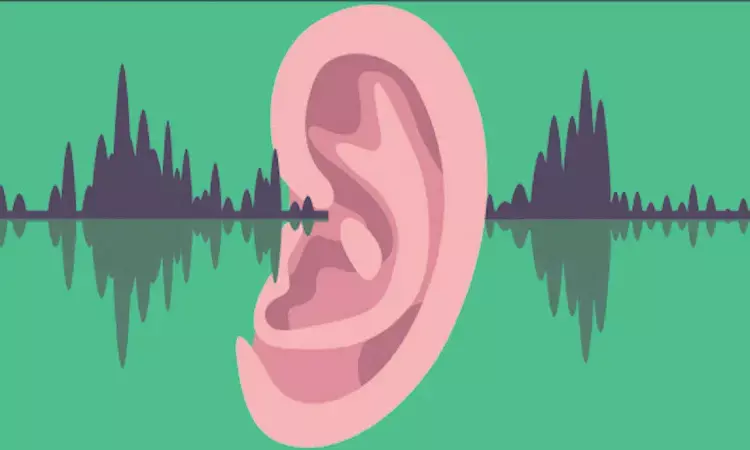- Home
- Medical news & Guidelines
- Anesthesiology
- Cardiology and CTVS
- Critical Care
- Dentistry
- Dermatology
- Diabetes and Endocrinology
- ENT
- Gastroenterology
- Medicine
- Nephrology
- Neurology
- Obstretics-Gynaecology
- Oncology
- Ophthalmology
- Orthopaedics
- Pediatrics-Neonatology
- Psychiatry
- Pulmonology
- Radiology
- Surgery
- Urology
- Laboratory Medicine
- Diet
- Nursing
- Paramedical
- Physiotherapy
- Health news
- Fact Check
- Bone Health Fact Check
- Brain Health Fact Check
- Cancer Related Fact Check
- Child Care Fact Check
- Dental and oral health fact check
- Diabetes and metabolic health fact check
- Diet and Nutrition Fact Check
- Eye and ENT Care Fact Check
- Fitness fact check
- Gut health fact check
- Heart health fact check
- Kidney health fact check
- Medical education fact check
- Men's health fact check
- Respiratory fact check
- Skin and hair care fact check
- Vaccine and Immunization fact check
- Women's health fact check
- AYUSH
- State News
- Andaman and Nicobar Islands
- Andhra Pradesh
- Arunachal Pradesh
- Assam
- Bihar
- Chandigarh
- Chattisgarh
- Dadra and Nagar Haveli
- Daman and Diu
- Delhi
- Goa
- Gujarat
- Haryana
- Himachal Pradesh
- Jammu & Kashmir
- Jharkhand
- Karnataka
- Kerala
- Ladakh
- Lakshadweep
- Madhya Pradesh
- Maharashtra
- Manipur
- Meghalaya
- Mizoram
- Nagaland
- Odisha
- Puducherry
- Punjab
- Rajasthan
- Sikkim
- Tamil Nadu
- Telangana
- Tripura
- Uttar Pradesh
- Uttrakhand
- West Bengal
- Medical Education
- Industry
Idiopathic sudden sensorineural hearing loss- an independent risk factor for stroke development

Researchers from a recent study have found out that idiopathic sudden sensorineural hearing loss (ISSNHL) may be an independent risk factor for the subsequent development of stroke especially in a sub-group of elderly patients.
The study is published in The Laryngoscope.
Idiopathic sudden sensorineural hearing loss (ISSNHL), or sudden deafness, is defined as an acute hearing loss of at least 30 decibels across three contiguous frequencies occurring over a 72-hour period. Although various theories on the underlying pathophysiology have been proposed (viral, vascular, immune-mediated) the cause of the hearing loss in most patients remains unknown.
However, consistent evidence supporting the various pathophysiologic hypotheses, prognostic associations, and even treatment recommendations for ISSNHL is scarce. Hence, Marc J. W. Lammers and associates from the BC Rotary Hearing and Balance Centre at St. Paul's Hospital (M.J.W.L., E.Y., B.D.W., J.L.), University of British Columbia, Vancouver, British Columbia, Canada conducted this systematic review and a meta-analysis assessing the risk of developing stroke and myocardial infarction after presentation with ISSNHL.
The authors included all studies investigating an association between ISSNHL and stroke and/or myocardial infarction (MI). Adhering to the MOOSE guideline, two independent reviewers extracted data, assessed risk of bias, and evaluated the relevance and quality of evidence.
The results showed that-
- Three observational studies evaluating the risk of stroke in ISSNHL were included (n = 6,521 patients).
- All individual study results indicated an increased relative risk of stroke after ISSNHL (unadjusted relative risk range 1.21–1.63).
- Pooled adjusted hazard ratios revealed a 1.42-fold increased risk of stroke after ISSNHL (hazard ratio [HR] 1.42; 95% confidence interval [CI] 1.15–1.75, I2= 55%).
- Subgroup analysis of one study demonstrated that the increased risk is only present in adults aged above 50 years (HR 1.23; 95% CI 1.07–1.42).
- Five observational studies evaluating the risk of MI in patients with ISSNHL were included (n = 61,499 patients).
- Pooled analyses demonstrated that ISSNHL was not associated with MI(HR 1.08, 95% CI 0.87–1.34).
Therefore, it was concluded that "ISSNHL may be an independent risk factor for the subsequent development of stroke especially in a sub-group of elderly patients."
However, they inferred that more studies are needed to confirm this association and to assess whether such patients would benefit from cardiovascular risk assessment and management to prevent future strokes.
Dr. Nandita Mohan is a practicing pediatric dentist with more than 5 years of clinical work experience. Along with this, she is equally interested in keeping herself up to date about the latest developments in the field of medicine and dentistry which is the driving force for her to be in association with Medical Dialogues. She also has her name attached with many publications; both national and international. She has pursued her BDS from Rajiv Gandhi University of Health Sciences, Bangalore and later went to enter her dream specialty (MDS) in the Department of Pedodontics and Preventive Dentistry from Pt. B.D. Sharma University of Health Sciences. Through all the years of experience, her core interest in learning something new has never stopped. She can be contacted at editorial@medicaldialogues.in. Contact no. 011-43720751
Dr Kamal Kant Kohli-MBBS, DTCD- a chest specialist with more than 30 years of practice and a flair for writing clinical articles, Dr Kamal Kant Kohli joined Medical Dialogues as a Chief Editor of Medical News. Besides writing articles, as an editor, he proofreads and verifies all the medical content published on Medical Dialogues including those coming from journals, studies,medical conferences,guidelines etc. Email: drkohli@medicaldialogues.in. Contact no. 011-43720751


